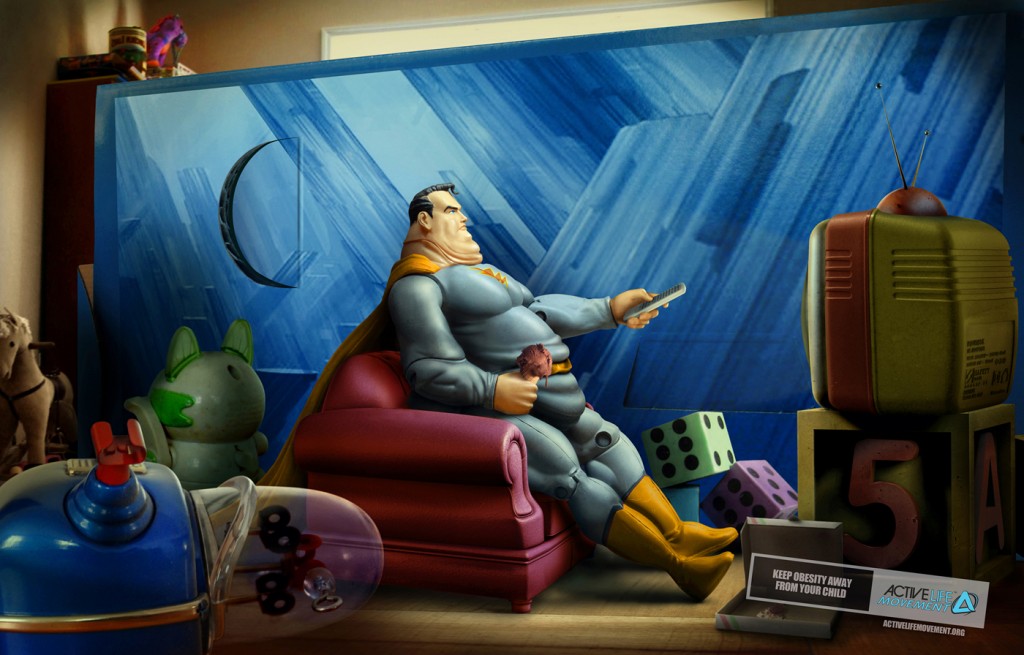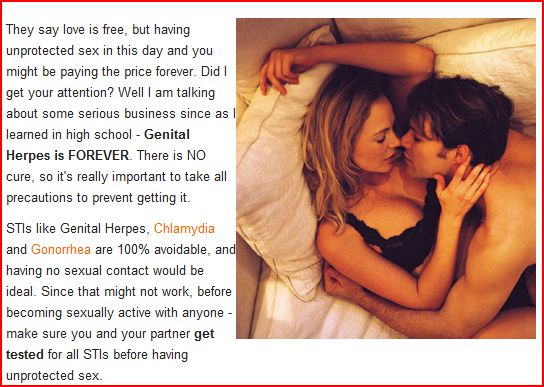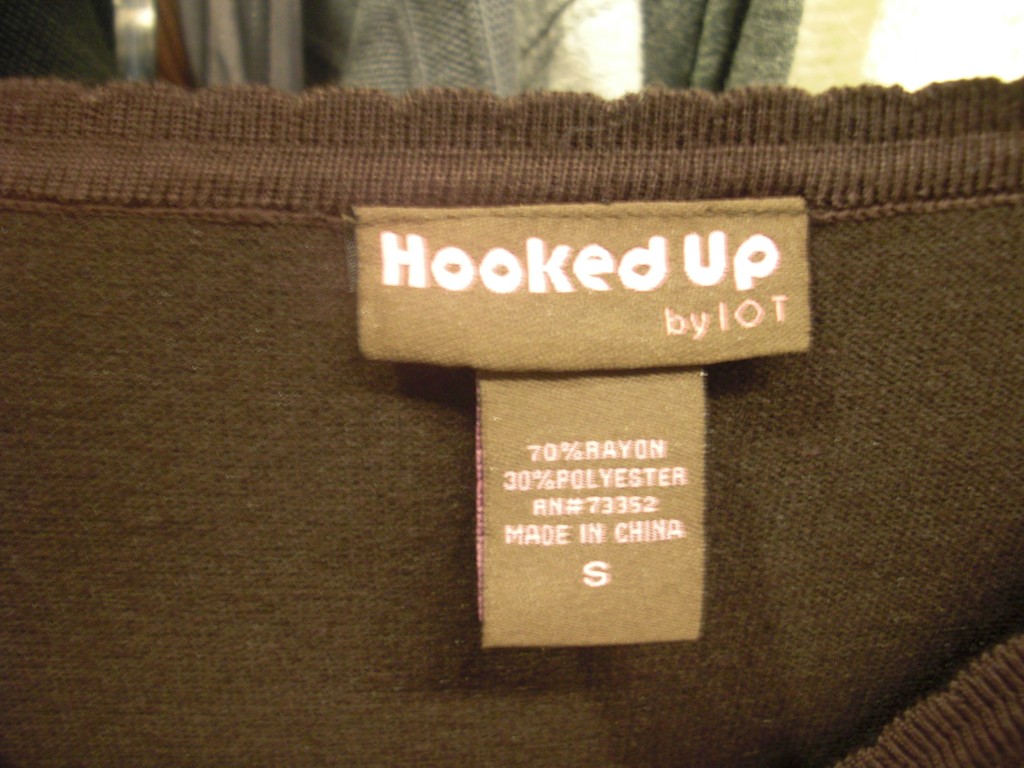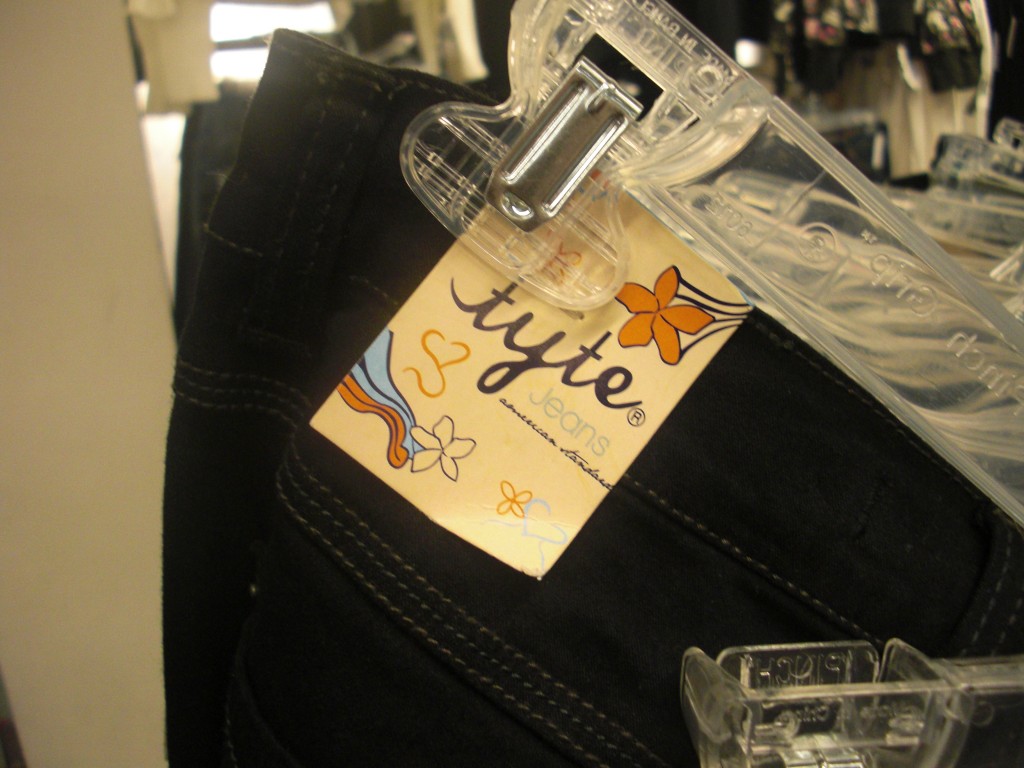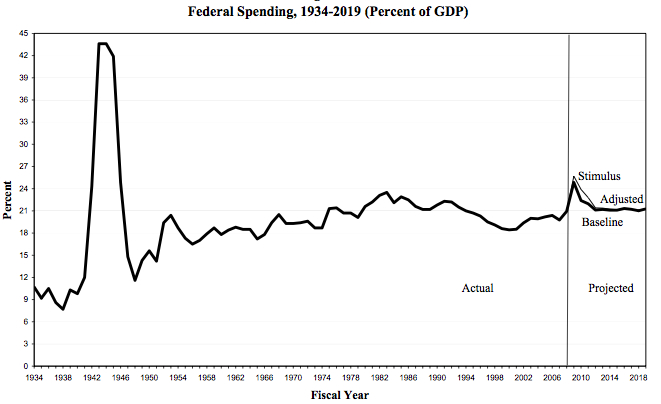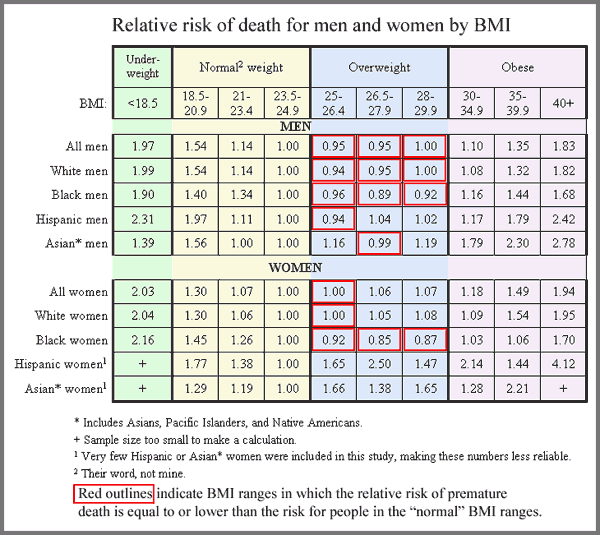I’ve previously blogged about how, during World War II, Americans were expected to sacrifice in ways that we simply do not expect Americans to sacrifice today. Specifically, my post addresses how people were encouraged to save gas and carpool (“Hitler rides in the empty seat!”), but people made all sorts of sacrifices: from going to work, to victory gardens, to eschewing panty hose.
Penny R. sent in another example that I found really interesting, staying off of phone lines during the hours when soldiers were likely to call home. These government-sponsored ads were found in a 1944 Southern California Telephone Company phone books for West Los Angeles (found at This Book Is for You):
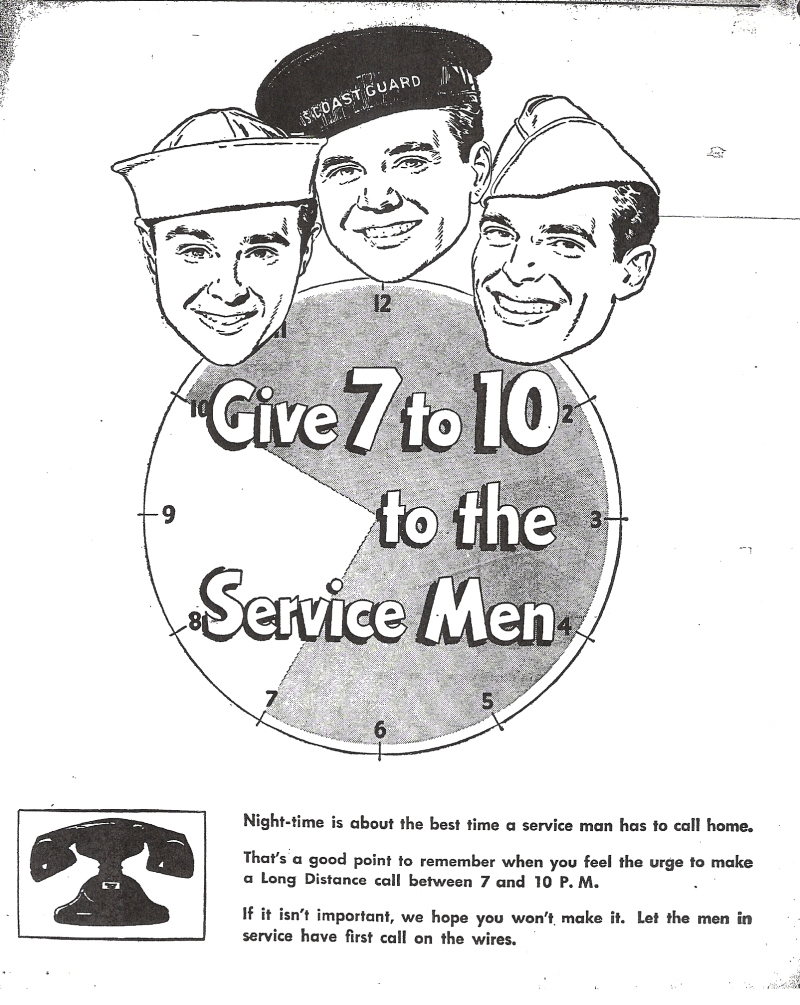
Text: “Night-time is about the best time a service man has to call home. That’s a good point to remember when you feel the urge to make a Long Distance call between 7 and 10 P.M. If it isn’t important, we hope you won’t make it. Let the men in service have first call on the wires.”
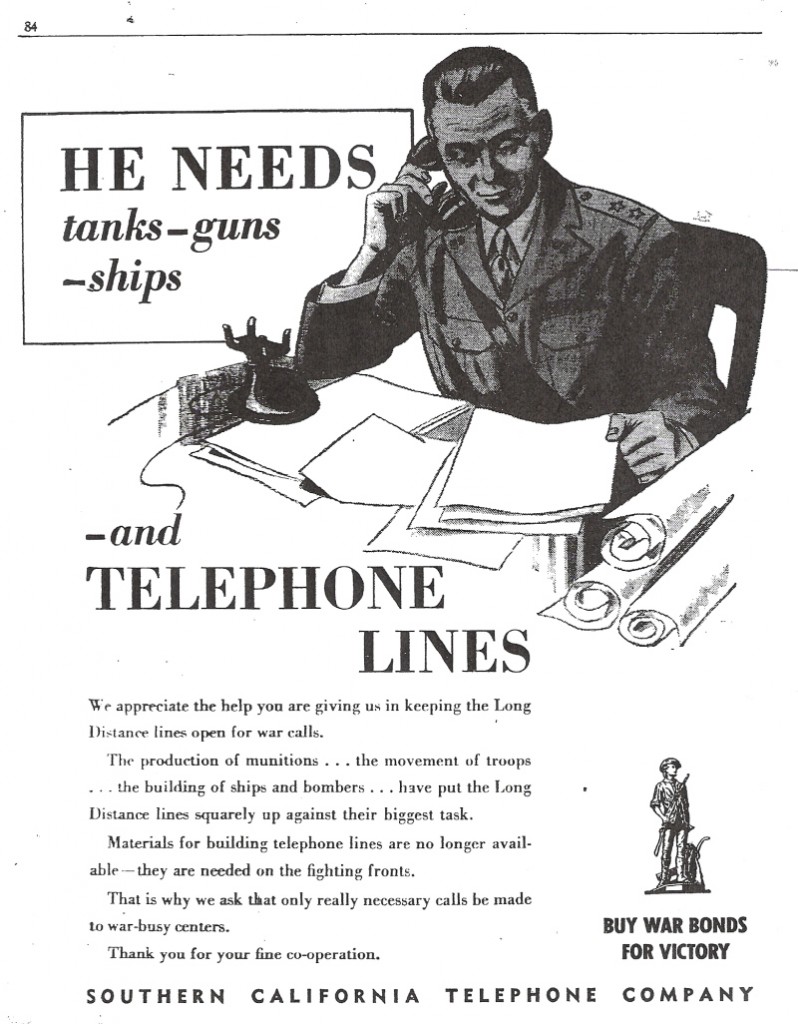
Text: “We appreciate the help you are giving us in keeping the Long Distance lines open for war calls. The production of munitions . . . the movement of troops . . . the building of ships and bombers . . . have put the Long Distance lines squarely up against their biggest task. Materials for building telephone lines are no longer available — they are needed on the fighting fronts. That is why we ask that only really necessary calls be made to war-busy centers. Thank you for your fine co-operation.”
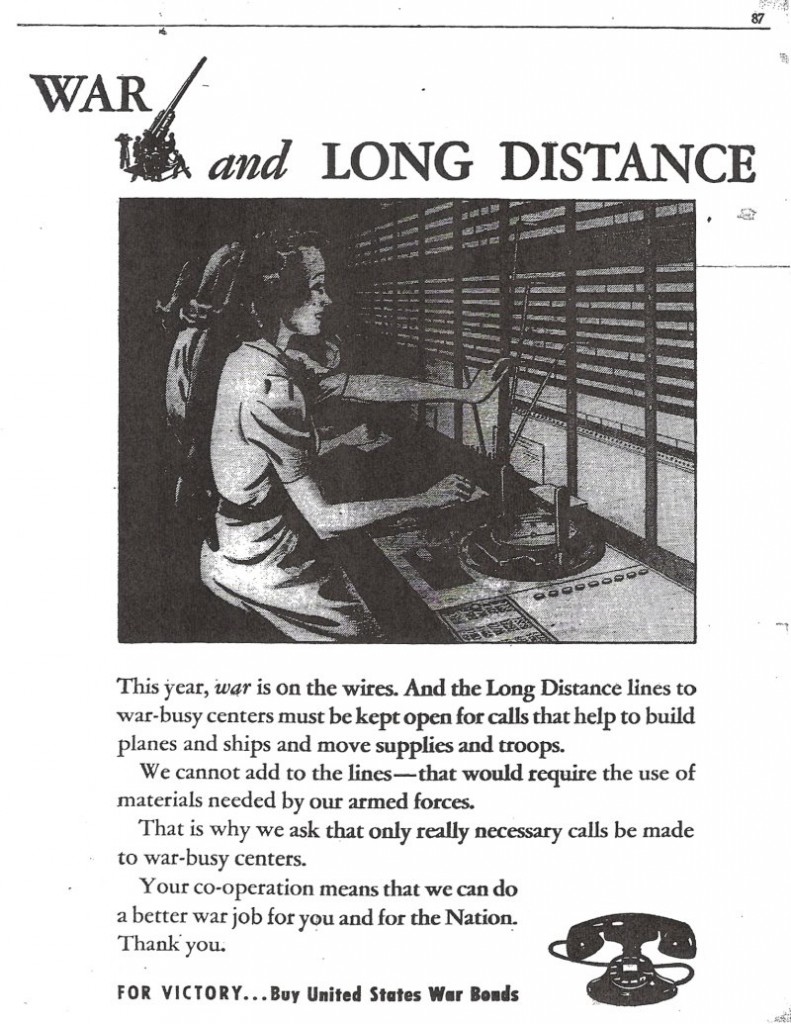
Text: “This year, war is on the wires. And the Long Distance lines to war-busy centers must be kept open for calls that help to build planes and ships and move supplies and troops. We cannot add to the lines–that would require the use of materials needed by our armed forces. That is why we ask that only really necessary calls be made to war-busy centers. Your co-operation means that we can do a better war job for you and for the Nation. Thank you.”
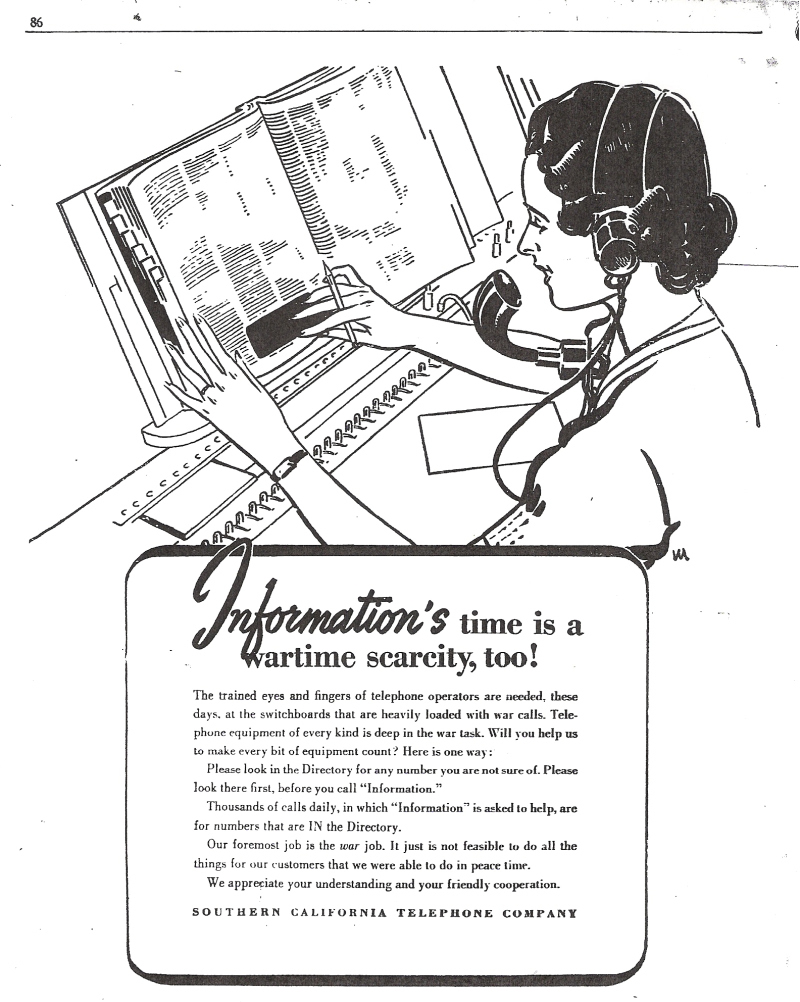
Text: “The trained eyes and fingers of telephone operators are needed, these days, at the switchboards that are heavily loaded with war calls. Telephone equipment of every kind is deep in the war task. Will you help us to make every bit of equipment count? Here is one way: Please look in the Directory for any number you are not sure of. Please look there first before you call ‘Information.’ Thousands of calls daily, in which ‘Information’ is asked to help, are for numbers that are IN the Directory. Our foremost job is the war job. It just is not feasible to do all the things for our customers that we were able to do in peace time. We appreciate your understanding and your friendly cooperation.”
Can you imagine being asked to stay off the internet every evening? Impossible!!!
